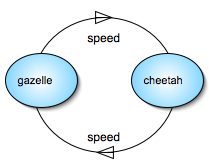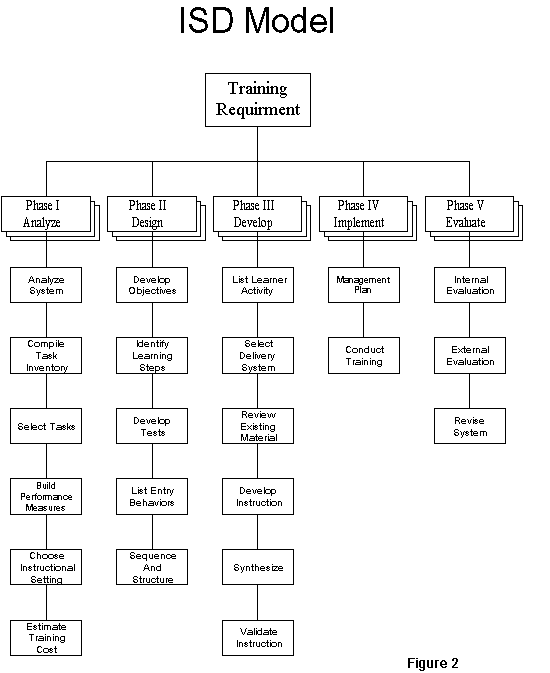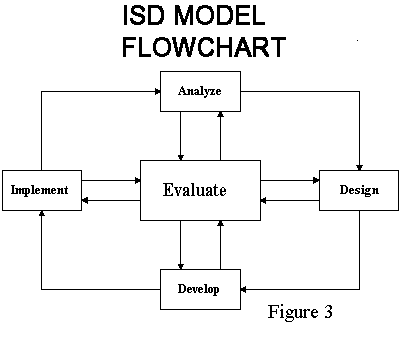Causal Loops
Living in a Non-Linear World
Because the world is round it turns me on
Because the world is round...aaaaaahhhhhh
Because the wind is high it blows my mind
Because the wind is high......aaaaaaaahhhh
- Because by the Beatles
In most discussions concerning models, we assume they happen in a linear fashion, for example, the ISD model:

Reality is made up of circles but we see straight lines - Peter Senge in The Fifth Discipline (p. 73).
Cause and effect (causal) relationships can normally be viewed from three competing viewpoints (Hitchins, 2000):
- Static-Cause and Effect: Effect follows cause and there is no observable connection between one or the another.
- Linear-Cause and Effect: This relationship has causes and effects acting like a string of dominoes falling. Most aspects of physics work in this manner. This is for those who believe in a clockwork universe.
- Causal Looping: The systems are interconnecting feedback loops, in that cause and effect chains loop back upon themselves. Causal looping shows how systems are composed of non-linear dynamics and chaos.
Two types of arrowheads are used to show the relationship between two variables:
- Open arrowheads indicate that the items at the tail and the pointed end move in sympathy, e.g. if food growth rates rise or fall, then the population rises or falls in sympathy -- or in causal terms, e.g. "a rise in crops causes a rise in population"
- Filled-in (closed arrowheads) indicate the inverse relationship -- a rise in population causes a drop in food supplies.

The closed arrowhead radiating from the performance box shows that it is having a negative impact, which in turn, cause an analysis to take place.
Causal loop models help us to better understand system and processes. This is important as system-modeling has grown considerably in recent years (Senge, et. el. 1994). However, they are far from perfect. One of the main problems with causal-loop diagrams is that they make no distinction between information links and rate-to-level links, sometimes called "conserved flows" (Richardson, 1986).
In systems thinking nothing is ever influenced in just one direction, thus the important concept of feedback -- any reciprocal flow of influence. Causal loop models, in turn, make good concept maps.
Reference
Hitchins, D. K. (Feb 2000). System Thinking.Richardson, George (1986). Problems with causal loop diagrams. System Dynamics Review, 2.2 (summer), pp. 158-170. Pegasus Communications.
Senge, P., Kleiner, A., Roberts, C., Ross, R., & Smith, B. (1994). The Fifth Discipline Fieldbook. New York: Doubleday, pp. 27-29.


